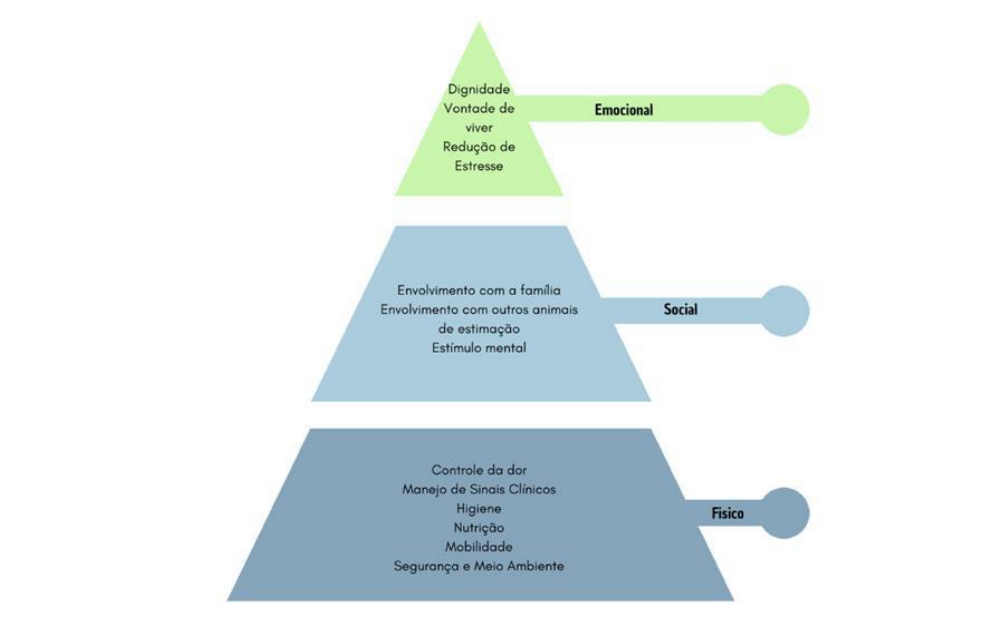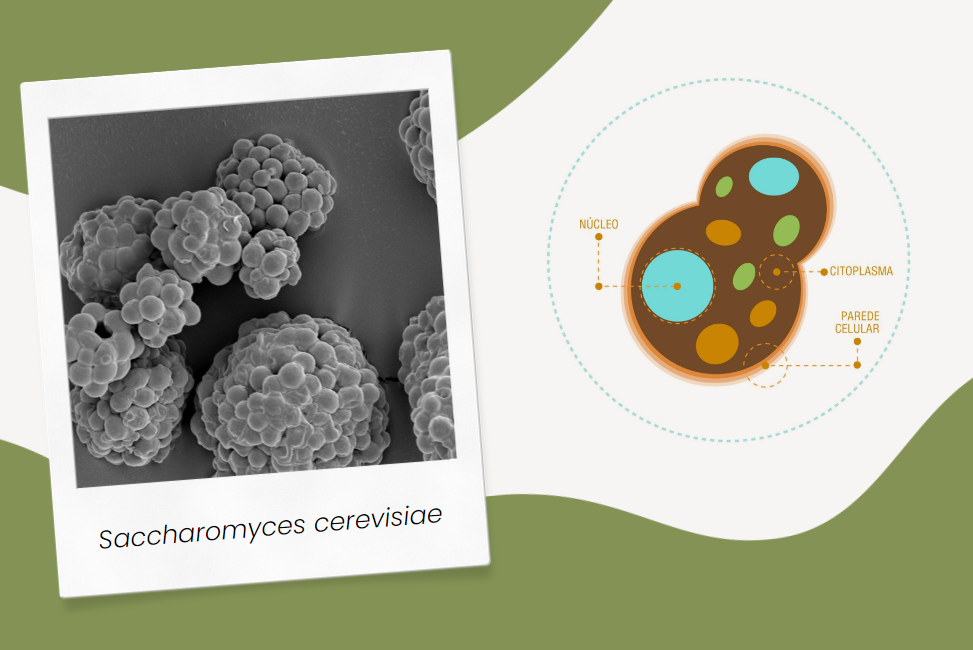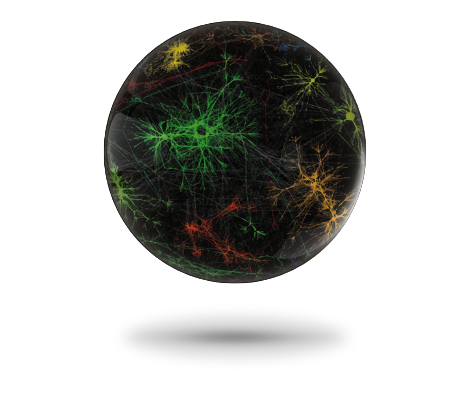Importance of yeast for dogs and cats with chronic kidney disease
Lilian Stefano Ferreira Blumer¹, Vanessa Olszewski², Mayara Farias Lopes Barbosa³, Ana Beatriz Xavier Cachichi4, Adriana Figueiredo5.
¹ Veterinary doctor and professor at Faculdade Anhaguera.
² Veterinarian and technical coordinator at Aleris Nutrition.
³ Veterinary Doctor, postgraduate student in Feline Medicine at Univitória.
4 Graduated in veterinary medicine from Universidade Paulista (UNIP) Campinas.
5 Zootechnician and Technical Manager at Aleris Nutrition.
Due to the advancement of Veterinary Medicine in recent years, there is a increased average life expectancy in dogs and cats is change in the course of diseases which are currently predominantly chronic.
From this perspective, today we are witnessing an increasingly aging animal population, with multiple comorbidities and, consequently, with increasingly attentive and demanding care needs, something of great interest also on the part of guardians, who today provide a special space for pet animals within families, dedicating themselves to them with unconditional love and experiencing suffering from illnesses in a very similar way to what they go through with other family members
humans.

In the current context, the Chronic Kidney Disease (CKD) represents an illness that can commit dogs and cats of all ages, but mainly elderly animals, ranging from 6½ to 7 years for dogs and 7.4 for cats.
According to International Renal Interest Society (IRIS), this is a chronic disease, irreversible, which appears as a irregularity of the structure or function of the kidneys, persistently, with a minimum evolution of 3 months (BLUMER, 2023).
When there is loss of kidney function, the kidneys are unable to carry out normal and expected physiological processes such as the production of urine and excretion of toxins and by-products, resulting in azotemia (increase in urea nitrogen and creatinine in the blood) (ROLIM et al., 2007).
When azotemia is associated with other clinical signs, it becomes uremia, causing an important impact on the quality of life of patients, with broad implications their health.
Anorexia, lethargy, weight loss, polyuria, polydipsia and vomiting are some of the most common clinical signs. Dehydration, mouth ulcers, halitosis and paleness may also be observed at the time of physical examination..(DIBARTOLA, 1997; POLZIN et al., 2005; MCGROTTY, 2008).
In this sense, the disease is part of the range of diseases that require Palliative care, since Chronic Kidney Disease is a progressive and irreversible disease whose conservative treatment allows improve the life quality and prolong the life expectancy, but does not represent a cure. In other words, it is clear that it is necessary treat the patient and not just the disease (BLUMER, 2023).
The foundations of treatment are based on controlling clinical signs of uremia, minimizing disturbances associated with fluid, electrolyte and acid-base balance, controlling blood pressure and complications (such as opportunistic infections) and adequate nutritional support.
FIGURE 1: Palliative care pyramid for animals.

SOURCE: Adapted from SHANAN et al. 2016.
O nutritional management of dogs and cats with CKD requires adaptations, and the balanced diet for this challenge is extreme importance in the treatment, because without a appropriate restriction of certain minerals, can lead to the accumulation of toxic protein catabolites and failure in renal excretion (BIRCHARD & SHERDING, 2008).
It is recommended to provide adequate levels of high biological value proteins and, in this way, guarantee less formation of non-protein nitrogenous compounds. In other words, the focus is not on removing protein, but on improving its quality and digestibility.
Furthermore, the diet must contain low sodium to avoid high blood pressure, fibers as a substrate for bacteria and fatty acids such as Omega-3 to reduce inflammation caused by the accumulation of toxins and by-products (ELLIOTT & LEFEBVRE, 2009, POLZIN, 2005).
The best recommendation is that changes in the patient's diet, management and lifestyle be done little by little rather than abruptly. The way a therapeutic food is presented to the animal has direct influence on acceptance of the animal it's yours stress level.
A component that has drawn attention to kidney patients is precisely the yeasts and their derivatives, capable of improve gut health, The digestibility and the palatability, in addition to helping to Immunity and modulate the microbiota.

It is believed that the use of nutraceuticals and components such as Saccharomyces cerevisiae and its derivatives in Association to these specific diets, may result in health benefits and patient recovery.
Studies with animals and humans already suggest that both prebiotics how much probiotics can be important tools in aiding therapy for maintaining a balanced intestinal microbiota and assist the slow the progression of CKD in patients with complications associated with uremia.
A Chronic Kidney Disease (CKD) is responsible for causing dysbiosis. High concentrations of urea in the body result in an increase in the concentration of ammonia, which raises the pH and increases the growth of aerobic bacteria (such as the Escherichia coli), resulting in an imbalance of the intestinal microbiota and reducing the population of beneficial anaerobic bacteria (as Bifidobacterium and Lactobacillus), and consequently increase the production of uremic toxins (SIMENHOFF et al, 1996). This dysbiosis also alters intestinal transit and reduces protein absorption (GULDRIS, PARRA & AMENÓS, 2017).

Authors report that the use of probiotics in the diet are capable of helping the microbiota, reducing the amount of pathogenic bacteria, producing uremic toxins through competition and also stimulating growth in Bifidobacterium and Lactobacillus. (GULDRIS, PARRA & AMENÓS, 2017; NOGUEIRA & GONÇALVES, 2011).
Research also reports that the addition of fermentable fibers such as Fructooligosaccharide (FOS), which act as prebiotics, when added to the diet of rats was able to reduce between 20 to 30% of the urea level in the blood and kidneys and in the excretion of renal nitrogen, supporting drug therapies (YOUNES et al. 1995).
In this way, additives and/or ingredients that directly impact the gut microbiome are being increasingly studied, as is the case of yeast-based products (Saccharomyces cerevisiae). Among them, it is worth mentioning the active, inactive, processed yeasts and cell wall, composing the concepts of probiotic, prebiotic and, more recently, the postbiotics.
It is expected that in the coming years, this greater understanding and more studies on how the microbiota and how the use of yeast they can assist or enhance treatments in dogs and cats and improve their quality of life during various challenges.
BIBLIOGRAPHIC REFERENCES
BIRCHARD, SJ & SHERDING, RG Saunders Manual: small animal practice. Vol. 3. Saint
Paulo: Roca, 2008.
BLUMER, LSF Application of palliative care in chronic kidney disease in dogs and cats:
integrative review, Final work of the Advanced Thanatology and Care Course
Palliatives, 2023.
DIBARTOLA, SP Clinical approach and laboratory evaluation of renal disease. In SJ ETTINGER
& EC FELDDMAN (Eds.), Textbook of veterinary internal medicine. São Paulo: Manole, 1997. p.
2355-2373.
ELLIOTT, DA & LEFEBVRE, H. Textbook of veterinary internal medicine. In P. Pibot, V. Biourge &
DA Elliott (Eds.), Encyclopedia of canine clinical nutrition royal canin. Ithaca, USA: Royal Canin, 2009. p. 252-282.
GULDRIS, SC; PARRA, EG; AMENÓS, AC Intestinal microbiota in renal disease
chronic. Revista de la Sociedad Española de Nephrologia. Vol 37, pages 9-19, 2017.
MCGROTTY, Y. Diagnosis and management of chronic kidney disease in dogs and cats. In Practice,
v. 30, no. 9, p. 502-507, 2008.
NOGUEIRA, JCR; GONÇALVES, MCR Probiotics – Literature Review. Brazilian Magazine
of Health Sciences, Vol. 15, no. 4, p. 487-492, 2011.
RAMEZANI, A., RAJI, DS The gut microbial, kdney disease, and targeted intervention. J Am Soc
Nephrol 2014; 25: 657-670.
ROLIM, MB de Q., FRANCO, E. de S., SANTOS, JP, OLIVEIRA, MAL, LIMA, PF Assessment of
Renal Biochemistry and Clinical Picture of a Dog with Chronic Renal Insufficiency Submitted to
Conservative Treatment and Organotherapy. VII JEPEX, 2007.
POLZIN, DJ, OSBORNE, CA & ROSS, S. Chronic Kidney Disease. In SJ ETTINGER & EC
FELDMAN (Eds.), Textbook of veterinary internal medicine. 2005. p. 1756-1785.
SHANAN A. et al. 2016 AAHA/IAAHPC End-of-life care guidelines. Journal of American
Animal Hospital Association. Lakewood, Vol. 52, no. 6, p. 341-356, Sep 2016.
SIMENHOFF, ML; DUNN, SR, ZOLLNER, GP, et al. Biomodulation of the toxic and nutritional
effects of small bowel bacterial overgrowth in end-stage kidney disease using freeze-dried
Lactobacillus acidophilus. Miner Electrolyte Metab 1996; 22: 92-6.
YOUNES, H. et al. Fermentable fibers or oligosaccharides reduce urinary nitrogen excretion by
increasing urea disposal in the rat cecum. J Nutr, St-Genes Champanelle, v.125, n.4, p.1010–1016,
1995













